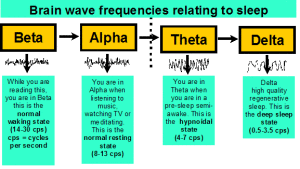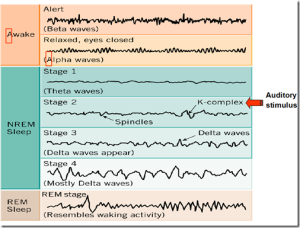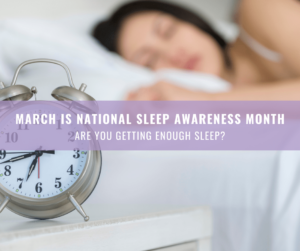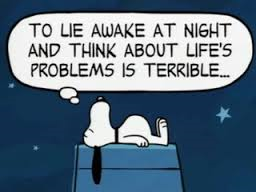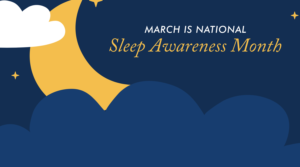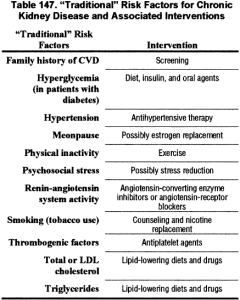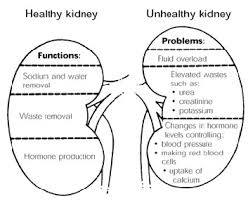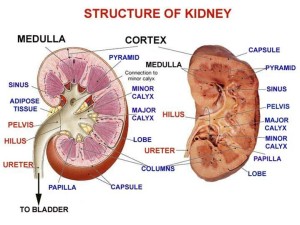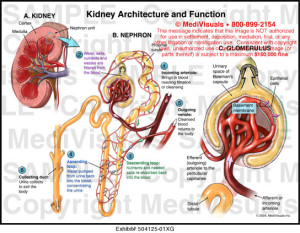“Balance” is the latest word on heart-healthy eating, according to the American Heart Association Scientific Statement that encourages people to adapt broad eating habits instead of focusing on single foods — and it’s not one size fits all.
QUOTE FOR FRIDAY:
“The World Sleep Society’s annual World Sleep Day is being held on Friday 17 March. This year’s theme is Sleep is Essential for Health.
Sleep is an essential, core pillar of health and is often under-valued and poorly understood. It’s as important as diet and exercise. The Sleep Health Foundation aims to raise the awareness of the importance of sleep and The World Sleep Society’s annual World Sleep Day is a great opportunity to do this.”
Sleep Health Foundation (https://www.sleephealthfoundation.org.au/key-events/world-sleep-day-2023.html)
QUOTE FOR THURSDAY:
“Obesity is a complex disease involving an excessive amount of body fat. So what does this mean? When it comes to sleep, can you have too much of a good thing? It’s true a good night’s sleep is essential for health. But oversleeping has been linked to a host of medical problems, including diabetes, heart disease, and increased risk of death. Know diabetes and heart disease can be linked to obese.
WebMD (https://www.webmd.com/sleep-disorders/physical-side-effects-oversleeping)
Sleep Stages I,II,III,IV, & Deep REM.
When awake, most people exhibit the brain wave patterns that can be classified into two types of waves, beta and alpha. Beta waves are those associated with day to day wakefulness. These waves are the highest in frequency and lowest in amplitude, and also more desynchronous than other waves. That is, the waves are not very consistent in their pattern. This desynchrony makes sense given that day to day mental activity consists of many cognitive, sensory, and motor activities and experiences, and, thus, when awake, we are mentally desynchronous as well. During periods of relaxation, while still awake, our brain waves become slower, increase in amplitude and become more synchronous. These types of waves are called alpha waves. For example, such brain waves are often associated with states of relaxation and peacefulness during meditation and biofeedback.
The first stage of sleep is characterized by theta waves, which are even slower in frequency and greater in amplitude than alpha waves. The difference between relaxation and stage 1 sleep is gradual and subtle. As the sleeper moves to stage 2 sleep theta wave activity continues, interspersed with two unusual wave phenomena. These phenomena, which occur periodically every minute or so, and are defining characteristics of stage 2 sleep, are termed sleep spindles and K complexes. The former is a sudden increase in wave frequency, and the latter is a sudden increase in wave amplitude. Stages 1 and 2 are relatively “light” stages of sleep. In fact, if someone is awoken during one of these stages, he or she will often report no being asleep at all.
Stage 1 is light sleep where you drift in and out of sleep and can be awakened easily. In this stage, the eyes move slowly and muscle activity slows. During this stage, many people experience sudden muscle contractions preceded by a sensation of falling. The first stage of sleep is characterized by theta waves, which are even slower in frequency and greater in amplitude than alpha waves. The difference between relaxation and stage 1 sleep is gradual and subtle. As the sleeper moves to stage 2 sleep theta wave activity continues, interspersed with two unusual wave phenomena. These phenomena, which occur periodically every minute or so, and are defining characteristics of stage 2 sleep, are termed sleep spindles and K complexes. The former is a sudden increase in wave frequency, and the latter is a sudden increase in wave amplitude. Stages 1 and 2 are relatively “light” stages of sleep. In fact, if someone is awoken during one of these stages, he or she will often report not being asleep at all.
In stage 2, eye movement stops and brain waves become slower with only an occasional burst of rapid brain waves.
When a person enters stage 3, extremely slow brain waves called delta waves are interspersed with smaller, faster waves.
In stage 4, the brain produces delta waves almost exclusively.
Stages 3 and 4 are referred to as deep sleep or delta sleep, and it is very difficult to wake someone from them. In deep sleep, there is no eye movement or muscle activity. This is when some children experience bedwetting, sleepwalking or night terrors. In 2008 the sleep profession in the US eliminated the use of stage 4. Stages 3 and 4 are now considered stage 3 by them.
Slow wave sleep comes mostly in the first half of the night, REM in the second half. Waking may occur after REM. If the waking period is long enough, the person may remember it the next morning. Short awakenings may disappear with amnesia.
In the REM period, breathing becomes more rapid, irregular and shallow, eyes jerk rapidly and limb muscles are temporarily paralyzed. Brain waves during this stage increase to levels experienced when a person is awake. Also, heart rate increases, blood pressure rises, males develop erections and the body loses some of the ability to regulate its temperature. This is the time when most dreams occur, and, if awoken during REM sleep, a person can remember the dreams. Most people experience three to five intervals of REM sleep each night.
Infants spend almost 50% of their time in REM sleep. Adults spend nearly half of sleep time in stage 2, about 20% in REM and the other 30% is divided between the other three stages. Older adults spend progressively less time in REM sleep.
QUOTE FOR WEDNESDAY:
“Sleep quality is different from sleep quantity. Sleep quantity measures how much sleep you get each night, while sleep quality measures how well you sleep.
Measuring sleep quantity is simple, as it’s quick to determine if you’re getting the recommended amount of sleep per night (usually defined as 7-9 hours for adults). Measuring sleep quality is a little more of an art than a science. Generally, good sleep quality is defined by the following characteristics:
- You fall asleep soon after getting into bed, within 30 minutes or less.
- You typically sleep straight through the night, waking up no more than once per night.
- You’re able to sleep the recommended amount of hours for your age group.
- You fall back asleep within 20 minutes if you do wake up.
- You feel rested, restored, and energized upon waking up in the morning.”.
Sleep Foundation (https://www.sleepfoundation.org/sleep-hygiene/how-to-determine-poor-quality-sleep)
How well do you sleep?
When you go to bed do you wake up to the slightest noise (car going by the house, a dog barking outside, the heat going on or the cat fight outside)? I know I do and have for years; unfortunately the slightest noise wakes me up, even a pin dropping to the floor and probably live on 5 to 6 hours a day of sleep. Some people even feel when they are scrambling to meet the countless demands of their day, cutting back on sleep might seem like the only answer. Who can afford to spend so much time sleeping, anyway? The truth is you can’t afford not to. Even minimal sleep loss takes a toll on your mood, energy, and ability to handle stress. By understanding your nightly sleep needs and what you can do to bounce back from chronic sleep loss, you can finally get on a healthy sleep schedule or pattern.
Sleep deprivation
Many of us try to sleep as little as possible. There are so many things that seem more interesting or important than getting a few more hours of sleep, but just as exercise and nutrition are essential for optimal health and happiness, so is sleep. The quality of your sleep directly affects the quality of your waking life, including your mental sharpness, productivity, emotional balance, creativity, physical vitality, and even your weight. No other activity delivers so many benefits with so little effort!
According to the National Institutes of Health, the average adult sleeps less than seven hours per night. In today’s fast-paced society, six or seven hours of sleep may sound pretty good. In reality, though, it’s a recipe for chronic sleep deprivation.
Remember sleep deprivation can affect you like a drunk. This could be many symptoms like fatigue, lethargy, lack of motivation, moodiness and irritability, reduced creativity and problem-solving skills, inability to cope with stress, reduced immunity; frequent colds and infections, concentration and memory problems, weight gain, impaired motor skills, increased risk of accidents, difficulty making decisions to even increased risk of diabetes, heart disease, and other health problems.
There is a big difference between the amount of sleep you can just get by on to get through your day compared to the amount you need to function optimally. Just because you’re able to operate on seven hours of sleep doesn’t mean you wouldn’t feel a lot better and get more done if you spent an extra hour or two in bed.
While sleep requirements vary slightly from person to person, most healthy adults need between seven and a half to nine hours of sleep per night to function at their best. Children and teens need even more (see Average Sleep Needs table below). And despite the notion that our sleep needs decrease with age, older people still need at least seven and a half to eight hours of sleep. Since older adults often have trouble sleeping this long at night, daytime naps can help fill in the gap.
The best way to figure out if you’re meeting your sleep needs is to evaluate how you feel as you go about your day. If you’re logging enough hours, you’ll feel energetic and alert all day long, from the moment you wake up until your regular bedtime.
Consistency doing the following measures is the key to prevent sleep deprivation: Settle short-term sleep debt with an extra hour or two per night, Keep a sleep diary, Take a sleep vacation to pay off a long-term sleep debt, finally you must make sleep a priority.
Understanding sleep
Sleep isn’t exactly a time when your body and brain shut off. While you rest, your brain stays busy, overseeing a wide variety of biological maintenance that keeps your body running in top condition, preparing you for the day ahead. Without enough hours of restorative sleep, you won’t be able to work, learn, create, and communicate at a level even close to your true potential. Regularly skimp on “service” and you’re headed for a major mental and physical breakdown.
The good news is that you don’t have to choose between health and productivity. As you start getting the sleep you need, your energy and efficiency will go up. In fact, you’re likely to find that you actually get more done during the day than when you were skimping on shuteye.
It’s not just the number of hours in bed that’s important—it’s the quality of those hours of sleep. If you’re giving yourself plenty of time for sleep, but you’re still having trouble waking up in the morning or staying alert all day, you may not be spending enough time in the different stages of sleep.
Each stage of sleep in the sleep cycle offers benefits to the sleeper. However, deep sleep (Stage N3) and REM sleep are particularly important. Learn more about the stages of sleep tomorrow and maybe it will help you strive for better health!
QUOTE FOR TUESDAY:
“Chronic kidney disease (CKD)—or chronic renal failure (CRF), as it was historically termed—is a term that encompasses all degrees of decreased kidney function, from damaged–at risk through mild, moderate, and severe chronic kidney failure. [1] CKD is a worldwide public health problem. In the United States, there is a rising incidence and prevalence of kidney failure, with poor outcomes and high cost (see Epidemiology).
CKD is more prevalent in the elderly population. However, while younger patients with CKD typically experience progressive loss of kidney function, 30% of patients over 65 years of age with CKD have stable disease. [2]
CKD is associated with an increased risk of cardiovascular disease and end-stage renal disease (ESRD). Kidney disease is the 10th leading cause of death in the United States. [3] )
Medscape (https://emedicine.medscape.com/article/238798-overview)
QUOTE FOR MONDAY:
“Acute kidney failure occurs when your kidneys suddenly become unable to filter waste products from your blood. When your kidneys lose their filtering ability, dangerous levels of wastes may accumulate, and your blood’s chemical makeup may get out of balance.
Acute kidney failure — also called acute renal failure or acute kidney injury — develops rapidly, usually in less than a few days.”
MAYO CLINIC (https://www.mayoclinic.org/diseases-conditions/kidney-failure/symptoms-causes/syc-20369048)
QUOTE FOR THE WEEKEND:
“Most people know that a major function of the kidneys is to remove waste products and excess fluid from the body. These waste products and excess fluid are removed through the urine. The production of urine involves highly complex steps of excretion and re-absorption. This process is necessary to maintain a stable balance of body chemicals.
The critical regulation of the body’s salt, potassium and acid content is performed by the kidneys. The kidneys also produce hormones that affect the function of other organs. For example, a hormone produced by the kidneys stimulates red blood cell production. Other hormones produced by the kidneys help regulate blood pressure and control calcium metabolism.”
National Kidney Foundation (https://www.kidney.org/kidneydisease/howkidneyswrk)
Part I Kidney Month – learn the anatomy and physiology of this organ to understand what happens with kidney failure!
The kidneys are important organs with many functions in the body, including producing hormones, absorbing minerals, and filtering blood and producing urine. While they are important and kidney failure can be fatal, a human only needs one healthy kidney to survive.
The kidneys are two bean-shaped organs that extract waste from blood, balance body fluids, form urine, and aid in other important functions of the body.
They reside against the back muscles in the upper abdominal cavity. They sit opposite each other on either side of the spine. The right kidney sits a little bit lower than the left to accommodate the liver.
When it comes to components of the urinary system, the kidneys are multi-functional powerhouses of activity, for if the kidneys aren’t working, meaning they don’t filter toxic wastes out of our blood stream (with other functions it does) than the waste products don’t get dumped into the urinary bladder from the renal tubes, called right and left ureters. In human anatomy, the ureters are tubes made of smooth muscle fibers that propel urine from the kidneys to the urinary bladder. If the kidneys are not working they are not filtering our blood (same principle as filtering beer to make it to perfection, the kidneys do it for our blood to be able to have the cells do their function to the optimal levels with keeping toxins out of the body in preventing many blood problems with more due to acidosis (toxin build up). In the adult, the ureters are usually 25–30 cm (10–12 in) long and ~3–4 mm in diameter.
The kidneys have multiple functions.
Some of the core actions of a healthy kidney or kidneys of a human body include:
-
- Waste excretion: There are many things your body doesn’t want inside of it. The kidneys filter out toxins, excess salts, and urea (a toxin), a nitrogen-based waste created by cell metabolism.
- * Urea is an organic chemical compound and is essentially the waste produced by the body after metabolizing protein. Naturally the compound urea is produced when the liver breaks down protein or amino acids, and ammonia, the kidneys then transfer the urea from the blood to the urine, when they do filtering of the blood.
- * Urea is a byproduct of protein metabolism, the ending result.
- *Extra nitrogen is expelled from the body through urea because it is extremely soluble (solid); it is a very efficient process. The average person excretes about 30 grams of urea a day, mostly through urine but a small amount is also secreted in perspiration. Synthetic versions of the chemical compound can be created in liquid or solid form and is often an ingredient found in fertilizers, animal food, and diuretics, just to name a few . Urea is what gives our urine the color yellow.
- *In the gastrointestinal tract, blood proteins are broken down into ammonia (could be due to high protein eating to drugs with actual conditions); and goes to the liver converting it to Urea. It is then released into the blood stream where the kidney’s take it up and eliminate it. Urea is then eliminated by the kidney’s, but not produced by it. –
- Urea is synthesized in the liver and transported through the blood to the kidneys for removal.
-
A Healthy Kidney or Kidneys functions in the human body:
- Water level balancing: As the kidneys are key in the chemical breakdown of urine, they react to changes in the body’s water level throughout the day. As water intake decreases, the kidneys adjust accordingly and leave water in the body instead of helping excrete it which aides in electrolyte balancing in the blood with keeping the body hydrated properly.
- Blood pressure regulation: The kidneys need constant pressure to filter the blood. When it drops too low, the kidneys increase the pressure. One way is by producing a blood vessel-constricting protein (angiotensin) that also signals the body to retain sodium and water. Both the constriction and retention help restore normal blood pressure.
- Red blood cell regulation: When the kidneys don’t get enough oxygen, they send out a distress call in the form of erythropoietin, a hormone that stimulates the bone marrow to produce more oxygen-carrying red blood cells.
- Acid regulation: As cells metabolize, they produce acids. Foods we eat can either increase the acid in our body or neutralize it. If the body is to function properly, it needs to keep a healthy balance of these chemicals. The kidneys do that, too.Because of all of the vital functions the kidneys perform and the toxins they encounter, the kidneys are susceptible to various problems.
-
What is Acute Kidney Failure?
- is a condition in which the kidneys suddenly lose their ability to function properly. This can occur for many reasons, including:
- Most people are born with two kidneys, but many people can live on just one. Kidney transplant surgeries with live donors are common medical procedures today.
-
This can occur due to many conditions, including:
- Infection
- Blood-clotting disorders
- Decreased blood flow caused by low blood pressure
- Autoimmune kidney disorders
- Urinary tract infections
- Complications from pregnancy
- DehydrationDiseases
What is Chronic Kidney Failure?
-
Chronic kidney failure – same as acute in that the kidney (s) loses its function.
- Diseases and conditions that commonly cause chronic kidney disease include:
- Type 1 or type 2 diabetes
- High blood pressure
- Glomerulonephritis (gloe-mer-u-lo-nuh-FRY-tis), an inflammation of the kidney’s filtering units (glomeruli)
- Interstitial nephritis, an inflammation of the kidney’s tubules and surrounding structures
- Polycystic kidney disease
- Prolonged obstruction of the urinary tract, from conditions such as enlarged prostate, kidney stones and some cancers
- Vesicoureteral (ves-ih-koe-yoo-REE-ter-ul) reflux, a condition that causes urine to back up into your kidneys
- Recurrent kidney infection, also called pyelonephritis (pie-uh-lo-nuh-FRY-tis)
- A chronic condition caused the failure to happen called a secondary diagnosis.
- Learn more tomorrow about Acute and Chronic kidney failure.
